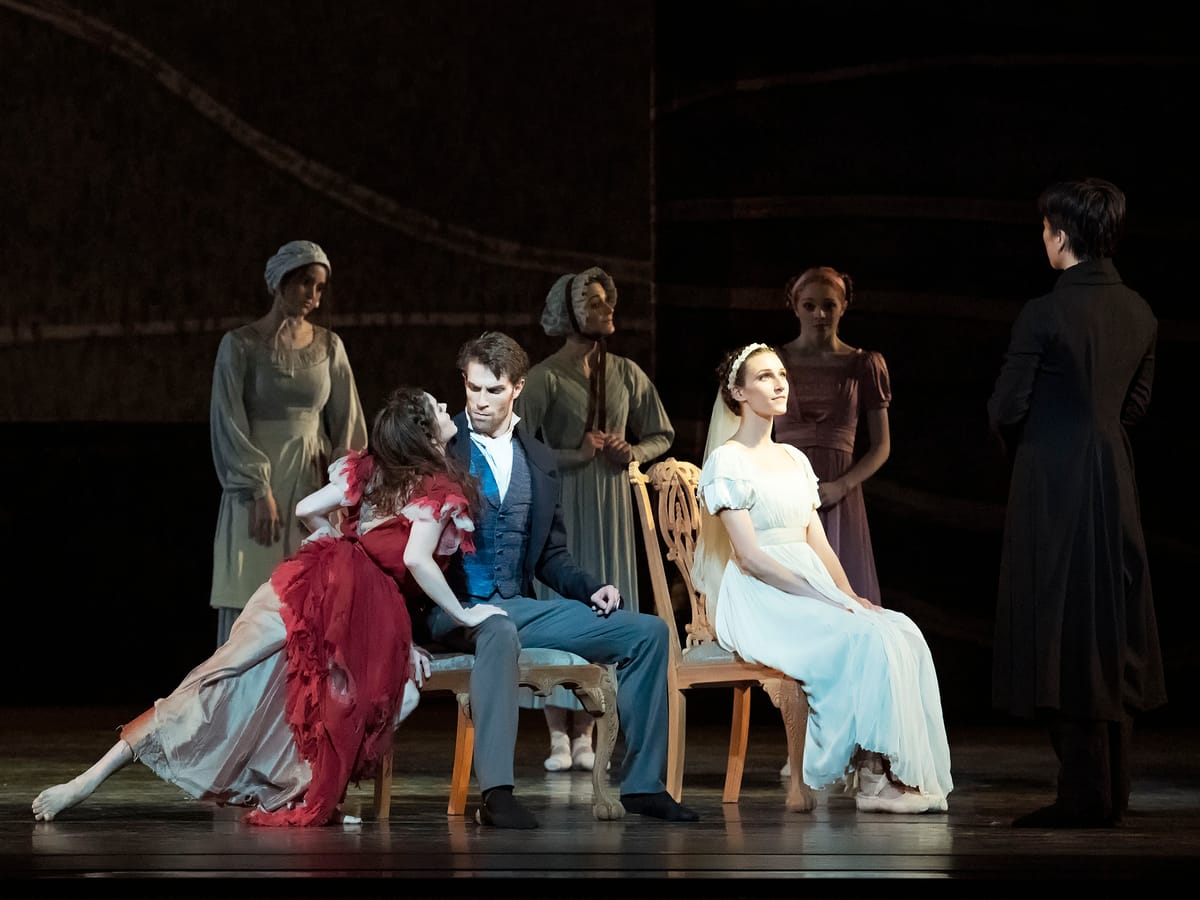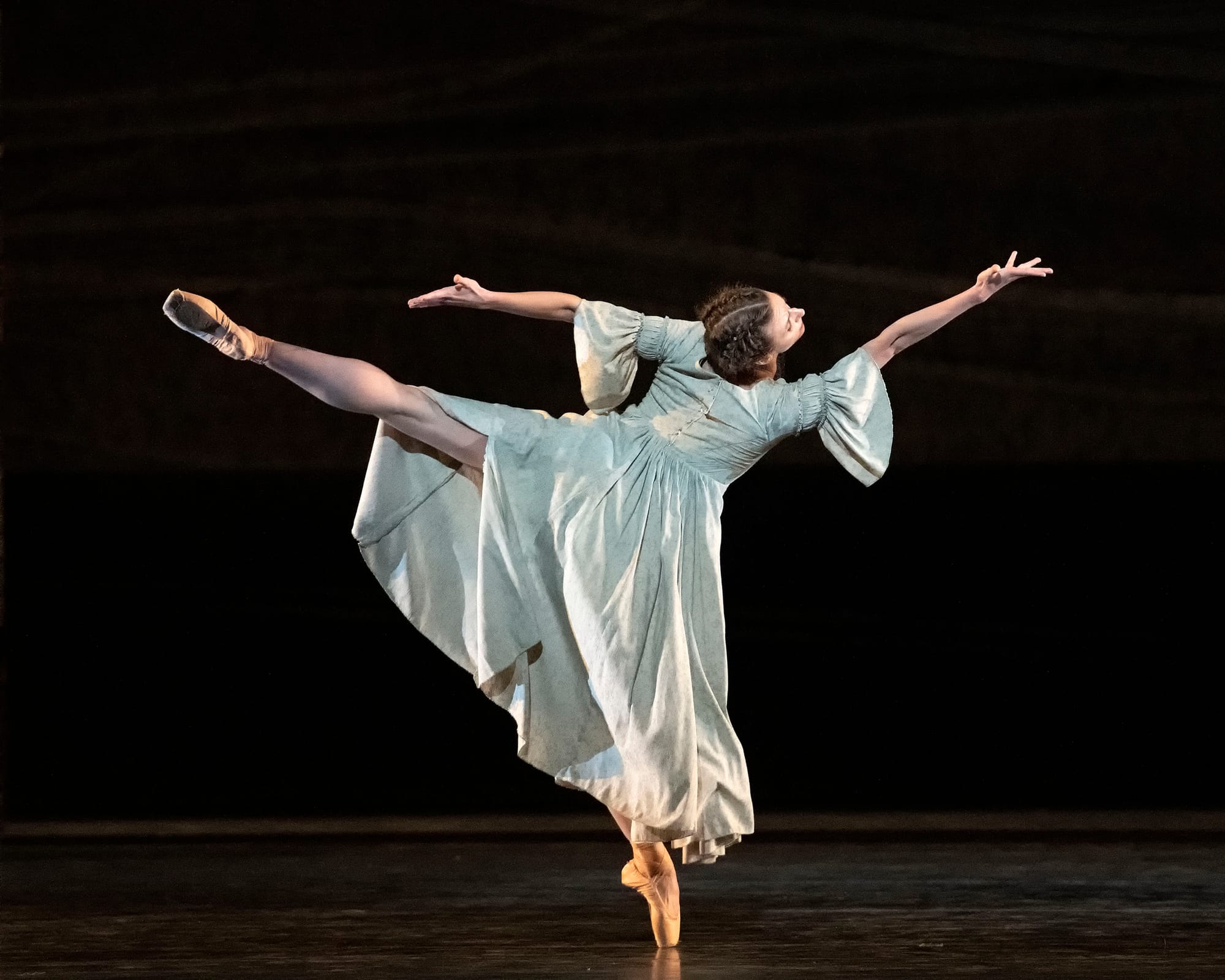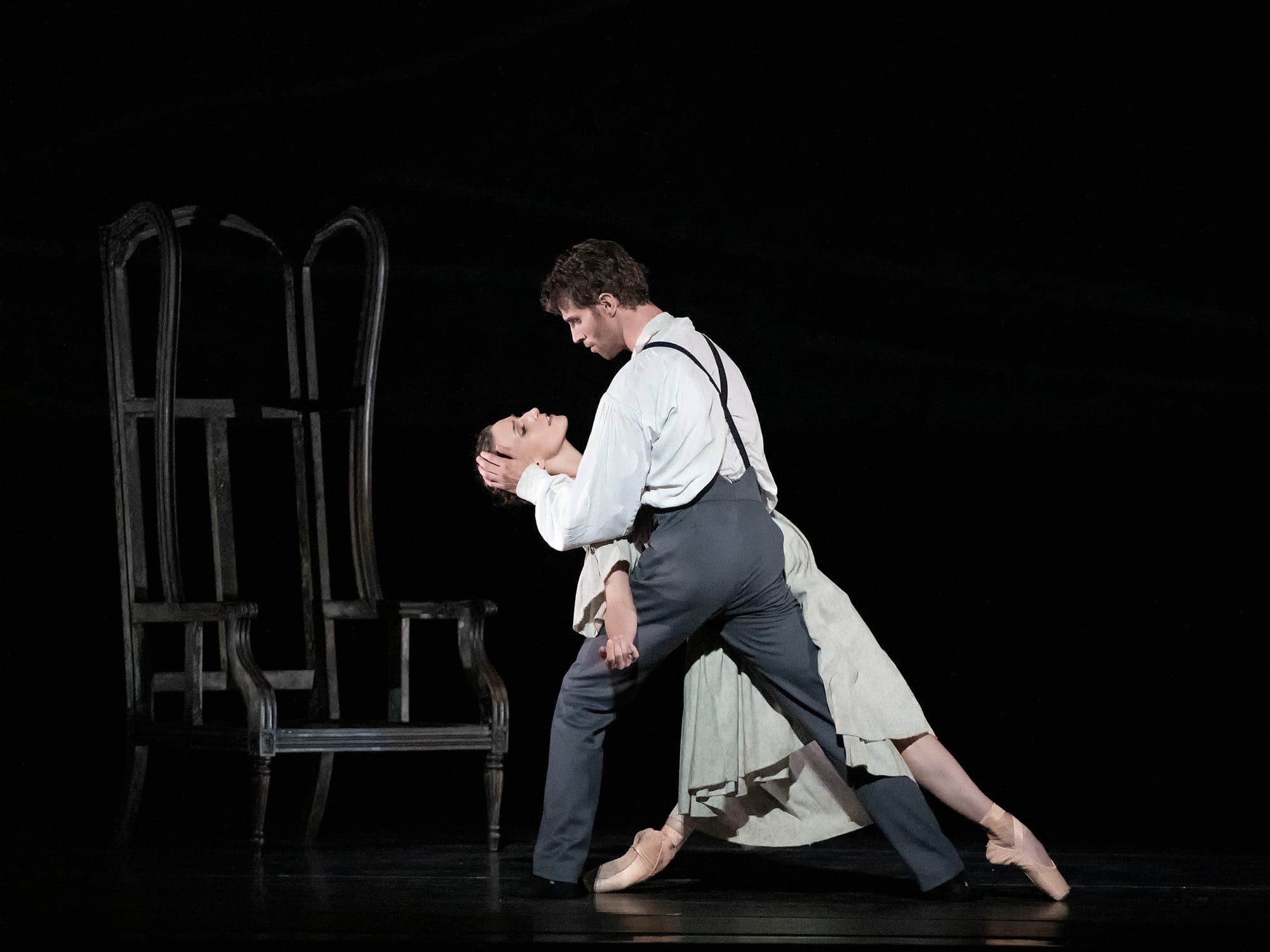The Romantic Agony

“Jane Eyre”
American Ballet Theatre
Metropolitan Opera House
New York, New York
June 4, 2019
Cathy Marston’s expressionist ballet based on Charlotte Brontë’s “Jane Eyre” got its first performance at American Ballet Theatre Tuesday night. Originally produced in 2016 in Doncaster, England by the Northern Ballet, this was its U.S. premiere. With an excellent score by Philip Feeney and scenery by Patrick Kinmonth (who also designed the costumes) the ballet’s twelve scenes over two acts were absorbing to watch and provided a star vehicle for ABT’s young ballerina Devon Teuscher in the title role. Who would have thought that a narrative work based on a mid-19th century novel that every schoolgirl once read, but packaged for the contemporary stage in the Euro-Dram dance language of Cranko, MacMillan, and Tudor by way of Christopher Wheeldon and Wayne McGregor, would provide the most rewarding new ballet staged in New York this year.
A brief synopsis of the novel’s plot will be helpful in delineating the theatrical problems the production had to solve and the way it addressed them.
It’s mid-19th century England. Jane Eyre, a young middle class woman, is orphaned and sent to live with an aunt where she’s raised as a poor relation. She rebels and is eventually farmed out to a boarding school, equally cold and loveless, where she makes a friend – Helen Burns – who then dies of consumption. Eventually becoming a teacher, she leaves to take a job as a governess for the niece of the wealthy Mr. Rochester. At his home she and Rochester fall in love, despite their class difference. Yet the household is haunted by mysterious happenings and one night she has to rescue Rochester when his bed has been set on fire, without the origin of the blaze being clear.
Despite Jane’s belief that Rochester is engaged to an eligible heiress in the neighborhood, he proposes marriage to Jane but, at the altar, it’s revealed that he’s already married to an insane woman confined in a secret apartment upstairs; she it was who set his bed on fire. In the face of this deceit Jane leaves and descends into madness until she’s found on the moors by a local grandee named St. John Rivers, who nurtures her back to health and in turn falls in love with her. But still haunted by her love for Rochester she rejects the new proposal and returns to Rochester’s mansion. Finding it burned and Rochester blind and maimed, she learns that the pyromaniac wife torched the place and died in the fire. She and Rochester (now free to marry) reunite, she forgives and marries him, and the two of them presumably live (not quite “happily” but at least on his part suitably repentant given all that’s gone on) ever after.
That this synopsis could not be made shorter without leaving out essential plot elements of course shows the difficulties that Marston and her creative team faced in staging the ballet. So many scenes with such a detailed plot; so many major and incidental characters make it a difficult story to tell.

Marston solved the central problem of the multiplicity of incident by shifting the scenery about to make the action continuous, with the scenes separated either by the sliding of curtains from a drop midway up the stage so as to create individual stage spaces or by using Brad Field’s lighting in local blackouts to isolate certain areas from the rest of the stage. A dais was also created at the rear of the stage so that action could proceed both there and in front. Narrating her story to St. Jean Rivers, we saw Jane and her interlocutor seated on the dais. The events she described proceeded in front.
Within this stage design, the plot was then reduced to a series of duets that dramatized Jane’s various relationships, with those duets punctuated by further group scenes such as the abortive wedding or the highly melodramatic fires. Thus we had a first series of duets between Jane and Rochester in act one; then in act two a duet between Rochester and the local heiress followed by a proposal duet between he and Jane; then a similar love and proposal duet between Jane and St. Jean Rivers after her flight; and finally an extended love and recognition scene à deux between Jane and Rochester at the denouement.
A psychological element, persisting throughout the ballet, was also superimposed to allow for Jane’s character development by surrounding her repeatedly with a group of six hallucinatory men in grey evening dress. Called the “D-Men” in the program, perhaps we should have started with them because, looking like refugees from Jean Cocteau’s “Beauty and the Beast,” we first met Jane in act one on the curtain’s rise fighting with them (in a flashback scene as she tells her story to St. Jean Rivers) and they continued to surround and persecute her at every twist and turn of the plot.
Jane lives in a male dominated world, we are presumably given to know, defined by it and existing as its victim until through a series of problematic loves she finds her place, and a powerful place it will become once she comes to dominate but also redeem Rochester at the conclusion. The role of Jane herself is also divided in two, with a younger appearing dancer (Catherine Hurlin) portraying Jane in the initial scenes before handing the role off to Teuscher midway through act one. The splitting of the roles also allowed the two Janes to confront each other at moments, thereby furthering the psychological element.
As for the music, so essential both to the dance and for driving the audience’s emotional experience, Feeney’s score combined excerpts from five pieces by Fanny Mendelssohn and one by her brother Felix, as well as three by Franz Schubert (including “Death and the Maiden”). Most were piano driven. So that Feeley, by stitching them together with pulsing passages of linking material of his own, created a sort of extended piano concerto, benefiting from the lyrical intimacy or quiet introversion that the adagio movements of so many great piano concertos contain. But it’s a somber intimacy in this score, so that even the moments of realized love remain fleeting and dark. The tempi are adagio or at most petit allegro throughout the ballet, except for the extensive use of a slightly dizzy Tarantella in act 2 for the proposal and wedding scenes.

For the dance material Marston utilizes a language derived from both MacMillan and Wheeldon (Marston and key members of her team trained at the Royal Ballet) but then weaves in large elements of modern dance gesture that particularly recall Martha Graham, as well as bits of a personal semaphore of her own. Small bursts of Graham or Paul Taylor-like expression (such as a dancer striding forward and swinging her arms outwardly in circles) end in tugs of war and shoving between the protagonists, that then resolve in turning lifts à la Wheeldon or McGregor. The movement patterns for larger ensemble scenes, such as that between the students and the two leading women when Jane’s friend Helen at Lowood School dies (the ballet's best and tenderest moment, extraordinarily performed by Hurlin and Anabel Katsnelson) were blocked with extreme detail.
Teuscher – tall, long limbed and with a sensitive and intelligent persona – displayed a mature dramatic expression in the title role that carried the ballet and made this performance feel like her first true career-defining moment; the sort of role that burns into your memory so that you associate it with a dancer in the way, for example, that you associate Alessandra Ferri with Manon. The very young Catherine Hurlin (all long tensile arms and legs, but with an amazingly strong core) likewise outdid herself as Young Jane, rendering a characterization with an emotional weight far beyond her years. In contrast to them James Whiteside’s portrayal of Rochester was relatively wan and lacking in both strong external sex appeal and dramatic focus. Aran Bell was superb as St. Jean Rivers and perhaps would have been a better choice for Rochester. But the lack of a stronger foil did not handicap Teuscher. The ballet can succeed with Rochester merely a cipher. Sarah Lane as his housekeeper did a nice turn in a character role and Stella Abrera was elegantly classical in her duet as the soon-to-be-spurned Blanche Ingraham.
The audience experience overall was compelling in act one. If act two fizzled out somewhat before the end, it was probably due to the fact that the catastrophe at the wedding, and the further catastrophe of the fire (recollected and dramatized after the fact) left little room for a satisfying final development. The work set itself up for anticlimax. But also, where the novel ends on a romantic note, Marston’s scenario opted instead for a more contemporary feminist denouement that seemed to show Jane able to love Rochester only when he was reduced to a wreck and she was therefore able to dominate him. Jane the deceived and aggressed became Jane the passive aggressor. The redemptive Virgin Mary aspect of her persona was suppressed and act two felt too long when the ballet ended without a lyrical note but with Jane stepping forward alone into a cone of light.
copyright © Michael Popkin 2019



